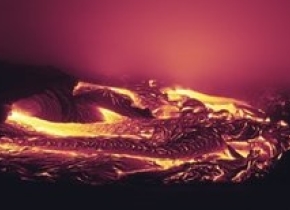

根据美国一地震传感网络监测结果,美国东北部的地质活动可能比以前认为的更加活跃。
播音/撰文:Steve Mirsky
翻译:张艺箫
校对:潘磊
Hi, I’m Scientific American podcast editor Steve Mirsky. And here’s a short piece from the April issue of the magazine, in the section we call Advances: Dispatches from the Frontiers of Science, Technology and Medicine: Hot Rocks by Shannon Hall.
大家好,我是《科学美国人》的podcast编辑Steve Mirsky。接下来给大家播报四月刊中“前沿:科学、技术和医学“部分的一篇文章:热岩,作者Shannon Hall。
For the past 200 million years New England has been a place without intense geologic change. With few exceptions, there have been no rumbling volcanoes or major earthquakes. But it might be on the verge of awakening.
在过去的两亿年里,新英格兰从未发生过严重的地质灾害。除了极少数区域外,那里没有活动频繁的火山也没有大型的地震源。但是这些严重地质灾害可能就在苏醒的边缘。
Findings published this January in Geology show a bubble of hot rock rising underneath the northern Appalachian Mountains. The feature was first detected in 2016 by EarthScope, a collection of thousands of seismic instruments sprinkled throughout the U.S. Vadim Levin, a geophysicist at Rutgers University, says this wealth of sensors lets earth scientists peer under the North American continent, just as the Hubble Space Telescope has enabled astronomers to gaze deep into the night sky. Should the broiling rock breach the surface—which could happen, though not until tens of millions of years from now—it would transform New England into a burbling volcanic landscape.
今年一月发表在《地理》杂志上的一项研究表明,北阿巴拉契亚山脉下面的热岩位置正在上升。2016年,集合了美国各地地震探测网络的EarthScope项目首次检测到这一现象。罗格斯大学的地理学家Vadim Levin说,如此丰富的传感器使得地球科学家能够深入勘测脚下的北美大陆,就像哈勃太空望远镜能够让天文学家凝视更深远的夜空。炙热的岩石会不会熔穿地球表面——这是可能发生的,虽然需要几千万年——新英格兰可能会变成活火山地貌。
The finding has sparked many questions, given that New England is not located along an active plate margin (where one tectonic plate rubs against another) but sits squarely in the middle of the North American plate. The exact source of the hot rock bubble, for example, is unclear. Because the edge of the North American continent is colder than a plate near an active margin, Levin suspects this edge is cooling the mantle—the layer just below the crust that extends toward the earth's core. As cold chunks of mantle sink, they may displace hotter segments, which would rise toward the surface. Scientists believe they have now imaged such an ascending piece. Although it sounds simple, this scenario “is a story that at present does not have a place in a textbook,” Levin says.
考虑到新英格兰不位于板块边缘(因板块相互挤压,地质活动频繁),而是在北美洲板块中部,这一发现引出了许多有价值的问题。比如,热岩的来源尚不明确。因为北美洲大陆板块边缘陆地温度低于另一板块的边缘(地质活动活跃),Levin猜测这个边缘正在冷却下方地幔并向地心延伸。随着地幔冷却下沉,其中可能会排出大量热量,这些能量或物质则会上升到地表。研究者支持这一想法,并且描绘出地质中这类上升的物质。虽然这个理论听起来很简单,但它“讲的是教科书中从没有过的故事。” Levin说。
Or perhaps pieces of the North American continent are breaking off and sinking into the mantle (which would also push the warmer mantle upward), observes William Menke, a geophysicist at Columbia University, who was not part of the study.
还有另外的可能,部分北美洲大陆正在脱落并沉入地幔(这也会推动灼热的地幔物质位置上升),这一观点来自哥伦比亚大学的地理学家William Menke。他没有参与EarthScope项目。
Scientists do not yet know which model is correct or if an entirely different one may be involved. Levin and his colleagues are eager to collect more data to bring this unusual hotspot into sharper focus and, in doing so, flesh out the theory of plate tectonics. “We know little about the interior of our planet, and every time we look with a new light ... we find things we did not expect,” Levin says. “When we do, we need to rethink our understanding of how the planet functions.”
目前科学家还不知道哪个模型是正确的,也许还会出现新的模型。Levin和他的同事期望收集到更多的数据,聚焦并推进这个特别的热点问题的研究,未来能充实板块构造理论。 “我们对地球内部的了解少之又少,每当我们看到新的曙光......我们会往往会发现事情和我们预想的不一样。”Levin说, “遇到这种情况,我们需要从新的角度去理解地球的运动。”
 京公网安备11010502039775号
京公网安备11010502039775号